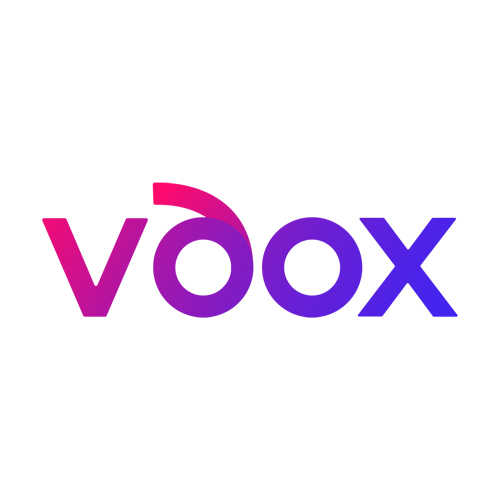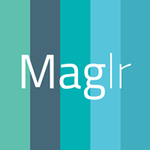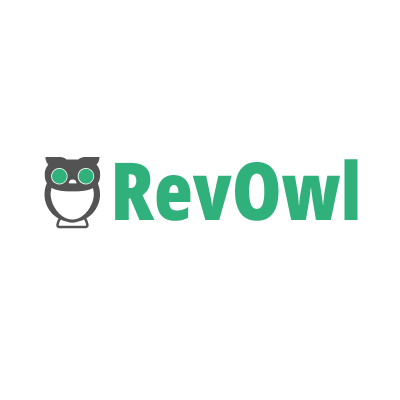What Is Content Experience Platform?
A Content Experience Platform (CXP) is a full-featured software program made to assist companies in efficiently and successfully producing, managing, and distributing digital content to their target audience. It acts as a focal point for all facets of content production and distribution, including coordination, teamwork, personalization, and optimization. Businesses may guarantee a consistent and interesting experience for their target audience by streamlining their content operations with a CXP.
Fundamentally, a CXP unifies the technologies required for content management, including analytics, digital asset management (DAM), and content management systems (CMS), into a single integrated platform. This enables companies to produce and keep a variety of information in one place, such as text, photos, videos, and interactive components. This guarantees consistency and brand alignment in addition to increasing efficiency.
The capacity of a CXP to tailor content according to the tastes, habits, and demographics of its audience is one of its primary characteristics. Data and analytics, which offer insights into how people engage with information, are used to do this. Businesses can use this information to customize their content to the unique requirements of their audience, creating more memorable and meaningful experiences.
A CXP also makes it easier for teams working on content creation—from writers and designers to marketers and developers—to collaborate and communicate with one another. With everyone on the team working toward the same objective and vision, this makes the workflow easier and more effective. A CXP assists companies in delivering their content across various channels and devices in addition to producing and managing content.
This makes it simpler to connect and interact with a large audience and includes email, social media platforms, mobile apps, and websites. Additionally, it facilitates bilingual content, which helps companies reach a wider audience in international markets.
What Are The Recent Trends In Content Experience Platform?
The field of creating and managing digital content is changing quickly, and companies are always looking for new and improved ways to provide their audiences with experiences that are more impactful and captivating. Content Experience Platforms (CEPs) have become a potent tool for businesses trying to improve and optimize their content strategy in recent years. What recent developments in content experience platforms should purchasers be aware of, nevertheless, given the rapid emergence of new technologies and trends? Let's get started and examine some of the most significant advancements in this fascinating area.
1. Personalization: The growing emphasis on personalization is one of the most important developments in CEPs. Customers want the same degree of personalization from businesses as they get more used to receiving individualized experiences in their daily lives. These days, CEPs have sophisticated personalization features that let companies customize their content for specific users according to their interests, demographics, and browsing habits. In addition to increasing user engagement, this trend aids companies in better understanding their target market and developing more focused and successful content marketing campaigns.
2. Omnichannel Publication: The shift to omnichannel publishing is another significant trend in CEPs. Businesses must make sure their content is accessible and suited for a range of devices and channels due to the proliferation of digital platforms. These days, CEPs come with capabilities that make it easy to distribute material via email, social media, websites, and mobile apps. This enables companies to offer a unified and consistent brand experience across all touchpoints and reach a larger audience.
3. Partnerships And integrations: CEPs are moving from stand-alone programs to more comprehensive platforms that include a number of services and functionalities beyond content management. CEPs are now collaborating with other tech companies to enable connectivity with tools like marketing automation, e-commerce, and customer relationship management (CRM) in order to deliver a full content experience. Businesses seeking a comprehensive solution to centrally manage their marketing and content activities would benefit from this trend.
4. Machine Learning And Artificial Intelligence (AI): Another topic that is gaining traction is the application of AI and ML in CEPs. By recognizing patterns and personalizing information, these technologies can increase audience engagement and relevance. By recommending improved headlines, graphics, and even complete articles based on user data and behavior, AI and ML can also assist with content development. We may anticipate seeing even more cutting-edge CEP applications, such automatic content optimization and predictive analytics, as AI and ML develop further.
5. Augmented Reality (AR) And Virtual Reality (VR): CEPs are integrating these technologies into their platforms as they become more widely available and reasonably priced. By offering immersive and interactive experiences, this trend gives businesses new opportunities to attract and engage their audience. To improve the overall shopping experience, a retail firm might incorporate augmented reality (AR) into their CEP to enable customers to virtually try on items before making a purchase.
Benefits Of Using Content Experience Platform
One effective tool that can help organizations in many ways is a content experience platform (CEP). This all-inclusive platform improves the overall client experience in addition to aiding in the management and distribution of content. Regardless of the size of your company, a CEP can offer substantial advantages that will increase your overall development and prosperity.
1. Simplified Content Administration: A CEP's ability to centralize all of your content in one location makes it simpler to organize and administer, which is one of its key benefits. You can save time and effort by doing away with the need for different tools and systems. Creating, managing, and publishing content across several platforms such as websites, social media, and mobile apps is simple with a CEP.
2. Improved User Experience: The purpose of a CEP is to offer a smooth and customized user experience. It enables you to make sure that your consumers have a relevant and interesting experience by delivering the appropriate material to the correct audience at the right time. A CEP can help you better understand your audience and provide content that appeals to them with capabilities like targeting and content customisation.
3. Enhanced Productivity And Efficiency: A CEP may greatly boost the productivity and efficiency of your team by automating tasks and optimizing procedures. Real-time collaboration and teamwork make it simple for your team to produce and oversee content, which improves quality and speeds up turnaround times. Additionally, this increases overall productivity by freeing up your crew to concentrate on other crucial activities.
4. Better Insights And Analytics: Having access to precise data and insights is essential to the success of any content strategy. Strong analytics and reporting capabilities offered by a CEP let you better understand the performance of your content. You may maximize and enhance your efforts by using this data to inform your content strategy selections.
5. Economical Resolution: A CEP provides companies of all sizes with an affordable option. A CEP's all-in-one strategy reduces expenses and boosts return on investment by doing away with the need for different tools and processes. Additionally, a CEP can help you reduce labor expenses and optimize your operations by increasing productivity and efficiency.
Important Factors To Consider While Purchasing Content Experience Platform?
There are a number of crucial considerations to make before investing in a content experience platform. This effective tool can significantly improve your audience's experience and your overall content strategy. It might be difficult to go through the features and choose the platform that best suits your needs, though, because there are so many possibilities available. Here are some important considerations to make when buying a content experience platform to assist you make an informed choice:
1. Simplicity of Use: The platform's simplicity of use is the first and most important consideration. You should ensure that the platform is easy to use and that all members of your team can traverse it with ease. In the long run, this will save you time and money and guarantee that your team can make use of all the platform's advantages.
2. Content Personalization: Seek out a platform that has strong personalization features for content. In order to give tailored content to your audience based on their interests and behavior, the platform should include sophisticated targeting and segmentation options. This will increase participation generally and produce better outcomes.
3. Integration Capabilities: Your CRM, marketing automation, and analytics solutions should all work in unison with your content experience platform. This will improve the overall efficacy of your content marketing initiatives and give you a comprehensive perspective of your data.
4. Multi-Channel Support: Having a platform that supports several channels, including social media, mobile, and the web, is crucial in today's digital environment. By doing this, you will be able to contact your audience where they are and provide a unified and consistent experience across all touchpoints.
5. Analytics And Reporting: Seek out a platform with strong reporting and analytics features. This will enable you to gauge how well your material is performing and make data-driven choices to maximize your approach. Real-time analytics and A/B testing are examples of features that can be helpful.
6. Scalability: Your company's content requirements will expand along with it. Verify that the platform you select can grow with you and meet your changing needs in the future. You'll avoid the trouble of later platform switches by doing this. You may choose a content experience platform that supports your business objectives and enables you to offer your audience a smooth, customized experience by taking these crucial criteria into account. Do not hesitate to request demos or utilize free trials to gain practical experience with the platform prior to making a final choice.
What Are The Key Features To Look For In Content Experience Platform?
To make sure the platform fits your company's goals, there are a few important elements to consider when looking at a Content Experience Platform (CXP).
1. Smooth Material Management: The CXP ought to have an intuitive user interface that makes it simple to create, edit, and publish material. It should also be capable of version management, metadata tagging, and content classification.
2. Personalization And Targeting: A successful CXP should have strong targeting and personalization capabilities that allow users to receive material that is specifically tailored to them based on their choices, behavior, and demographics.
3. Multi-Channel Delivery: In the current digital era, consumers engage with companies through a variety of platforms, including social media, mobile apps, and websites. Multi-channel content delivery should be supported by the CXP to provide a smooth and uniform experience across all touchpoints.
4. Analytics And Reporting: Information about how users interact with the material should be provided by the CXP. This include data like click-through rates, time spent on the page, and page views. By using this data, material may be optimized to better meet the needs of the intended audience.
5. Material Personalization And Optimization: A strong CXP should allow material to be tailored and optimized according to user demographics, preferences, and behavior. Delivering pertinent and interesting material that encourages conversions and fosters client loyalty may be aided by this.
6. Integration Capabilities: The CXP should be able to interface with other systems, including analytics tools, marketing automation, and customer relationship management (CRM). This makes it possible to manage digital content in a more efficient and consolidated manner.
7. User-Friendly Design Interface: Business users should be able to produce and manage content without the requirement for technical skills thanks to the CXP's intuitive and user-friendly design interface.
8. Mobile Responsiveness: The CXP should have a responsive design to provide a smooth experience across all devices, including tablets and smartphones, given the increase in mobile usage.
9. Content Personalization For Various Audiences: A competent CXP should be able to tailor content for various target audiences, including partners, customers, and prospects. This guarantees that the information is suited to each group's unique requirements and preferences.
10. Flexibility And Scalability: The CXP should be able to grow and change with your company. Additionally, it should provide versatility in terms of features and connectors, enabling modification to match your company's particular requirements.
Why Do Businesses Need Content Experience Platform?
For businesses to succeed in the current digital era, they must have a Content Experience Platform (CEP) in order to provide their online audience with a cohesive and smooth experience. Businesses can easily manage, customize, and distribute content to their target audience over a variety of channels with the help of CEPs, which are game-changing tools. First off, a CEP eliminates the need for numerous tools and systems by centralizing all content production, editing, and administration onto a single platform.
Businesses save time and money by streamlining the content creation process and minimizing inefficiencies. Second, CEPs give companies the ability to tailor their content according to the characteristics, inclinations, and actions of their audience. This degree of customization boosts engagement and conversions in addition to improving the user experience.
Moreover, companies must provide a consistent brand experience across all touchpoints due to the growing usage of diverse digital media. By facilitating omni-channel content distribution, a CEP makes sure that the appropriate content is sent to the appropriate person at the appropriate moment. CEPs' real-time tracking and measurement of content performance is another important function.
This gives companies useful information about what content is appealing to their audience and what has to be improved.These insights support companies' data-driven decision-making and ongoing content strategy optimization. Furthermore, CEPs include sophisticated content management features that guarantee content security, accuracy, and quality, including version control, workflow management, and user permissions.
Finally, firms might get a competitive edge in the crowded online market by investing in a CEP. Businesses may differentiate themselves, foster consumer loyalty, and draw in new clients by offering a smooth and customized content experience.
How Much Time Is Required To Implement Content Experience Platform?
Your company's unique demands and requirements will determine how long it takes to develop a Content Experience Platform (CEP). However, the average time to completely install a CEP can range from a few weeks to a few months. Evaluating your current content strategy and identifying any gaps or places for improvement is the first stage in the implementation process.
This entails being aware of your target audience's tastes and content consumption habits. This preliminary evaluation may take one to two weeks. The next step is to choose a CEP that best fits your company's aims and objectives. Researching and contrasting various choices, as well as possibly attending CEP provider consultations and demos, might take two to three weeks.
The real implementation procedure can start as soon as you've chosen a CEP. This include configuring the platform, transferring your material to it, and connecting it with your current systems. The amount, complexity, and degree of customization needed for your material will all affect how long this stage takes.
This stage can take four to six weeks on average. To make sure the CEP fits your unique needs, further time could be required for testing, training, and fine-tuning after the initial setup. Another two to four weeks may be needed for this. Depending on the size and complexity of your project, a CEP's implementation period could be anywhere from eight weeks to six months. To guarantee a successful and seamless deployment of your CEP, it is critical to have a clear grasp of your business objectives and expectations in addition to reasonable timescales.
What Is The Level Of Customization Available In Content Experience Platform?
In the current digital environment, any business hoping to engage and convert its target audience must have a compelling content experience. A software program called a Content Experience Platform (CXP) assists companies in developing, overseeing, and distributing customized content experiences across a range of platforms and devices. The degree of customisation a CXP offers is one of the most important things to take into account before making an investment.
This speaks to how well the platform can be customized to fit the unique requirements and goals of your company. We'll go over the many degrees of customization that a CXP offers in this buyer's guide, along with why they're important. Basic Customization Options: In its most basic form, a CXP will provide templates and common functionality for content creation and publication.
These could include simple customizing choices like changing the fonts and colors, adding brand logos, and adding a name or location in the article. Small organizations and those that are just getting started with content marketing might benefit from this degree of customisation. enhanced customisation Options: An enhanced degree of customisation is essential for businesses with more complicated content requirements.
This includes defining user roles and permissions, integrating with other tools and systems, and creating unique templates and layouts. Businesses can use these characteristics to produce highly customized content experiences that effectively engage their target audience and complement their brand. Dynamic Content customisation: Personalization is enhanced with a CXP that provides dynamic content customisation.
It enables companies to produce and distribute contextualized content in real time according to user choices and behavior. The platform can provide the correct material to the right person at the right moment by utilizing data and analytics, giving the user a more immersive and interesting experience. Flexible and Open APIs: When it comes to customisation, the platform's APIs' (Application Programming Interface) flexibility is another crucial factor to take into account.
Businesses may combine their CXP with other tools and systems, such marketing automation software and CRM, thanks to an open and adaptable API. This facilitates smooth data transfer and improves the general client experience.
Which Industries Can Benefit The Most From Content Experience Platform?
A software program called a content experience platform aids companies in producing, organizing, and providing their audiences with interactive, tailored content experiences. Content generation, administration, personalization, and distribution across several media are among its characteristics. Any company wishing to improve their content strategy should invest in this platform, which has shown advantages for a variety of industries. Let us examine a few sectors that stand to gain the most from a content experience platform.
1. E-commerce: To increase client engagement and revenues, the e-commerce sector mostly depends on interactive and graphic content. E-commerce companies may improve the overall consumer experience by using a Content Experience Platform to develop interactive shopping guides, immersive product catalogs, and tailored product suggestions.
2. Travel And Hospitality: Providing clients with a smooth and customized experience is essential in the fiercely competitive travel and hospitality sector. Businesses may increase consumer engagement and loyalty by creating and delivering customized content, such as virtual tours, destination guides, and customized travel itineraries, with the help of a content experience platform.
3. Healthcare: A Content Experience Platform can assist healthcare organizations in producing and disseminating informative and useful content, including health articles, videos, and frequently asked questions, in light of the rising need for online healthcare services. In addition to improving the patient experience, this gives the company a reliable and authoritative reputation.
4. Education: A Content Experience Platform can support the growth of the education sector, which has experienced a substantial digital shift. It enables teachers to produce and present dynamic and captivating course materials, tests, and evaluations, improving students' overall educational experience.
5. Financial Services: Educating clients and fostering trust are the main goals of the financial industry. Financial companies can position themselves as thought leaders in the sector by producing and disseminating useful content like investment advice, financial planning manuals, and market insights via a content experience platform.
Conclusion
In conclusion, companies wishing to boost consumer engagement and their content strategy will find that the Content Experience Platform (CEP) category provides a priceless answer. A CEP's extensive feature set, which includes analytics, personalization, and content production and distribution, can assist companies in giving their viewers an engaging and dynamic experience.
The platform's usability, functionality, and ability to integrate with current systems should all be carefully considered when thinking about a CEP. Additionally, take into account the vendor's resources and service level, in addition to any potential extra features or add-ons. The choice to invest in a CEP should ultimately be in line with the objectives of your company and the demands of your clients.
Businesses may produce engaging and pertinent content, acquire insightful data, and facilitate fruitful consumer interactions with a carefully selected CEP. Select a CEP that best suits your particular needs and financial constraints by keeping these things in mind.






















